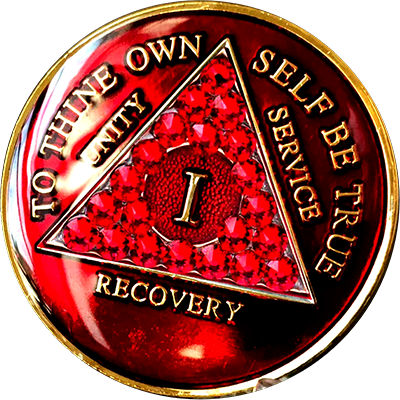Hypothermia is one of those hidden dangers that can strike quickly in the workplace, especially in industries where employees are exposed to cold environments. Construction sites in winter, food storage facilities, outdoor security work, and even office buildings with poor heating can put workers at risk. Knowing how to give effective first aid for hypothermia victims is not just about saving lives—it is also about ensuring workplace safety and reducing hazards that could turn fatal if ignored.
Before we dive into the steps, it’s worth noting how workplace safety education plays a huge role in preparing employees for such emergencies. Programs like the NEBOSH course in Pakistan teach people not just the theory of occupational safety but also practical, hands-on ways to respond to emergencies like hypothermia. In fact, many safety managers credit this training for saving lives on worksites where temperature-related hazards are common.
What is Hypothermia and Why It’s a Workplace Hazard?
Hypothermia happens when the body loses heat faster than it can produce it, causing the internal body temperature to drop dangerously low. Normally, the human body functions best at around 37°C (98.6°F). When it falls below 35°C (95°F), hypothermia sets in. Even a slight drop can affect coordination, judgment, and muscle control. That’s why it’s considered a serious occupational hazard in cold conditions.
Imagine a warehouse worker handling frozen goods. At first, he may feel just a chill, but without proper protective clothing or breaks, his body temperature could start dropping. Within minutes, he could be disoriented, unable to call for help, or collapse silently in a corner of the workplace. This shows why prevention, awareness, and effective first aid are crucial.
Recognizing the Signs of Hypothermia
The first step to giving proper first aid is recognizing the warning signs. Hypothermia can be subtle at the beginning, but quick identification can make all the difference.
Shivering that becomes uncontrollable
Slurred speech or mumbling
Slow or shallow breathing
Confusion, memory loss, or drowsiness
Loss of coordination and stumbling
Cold, pale skin that feels stiff
In advanced stages, shivering may actually stop, which is a dangerous sign that the body is running out of energy to generate heat. At this point, the victim could lose consciousness, and without immediate action, the situation could be fatal.
Why Workplace Safety Training Matters
One of the biggest challenges in workplace emergencies is the lack of preparedness. Many employees panic or don’t know what to do when a colleague collapses from cold exposure. Training programs like the NEBOSH course in Pakistan emphasize proactive hazard identification and emergency response, giving workers the confidence to act quickly and correctly.
By understanding safety principles through such training, employees not only learn about hypothermia but also about other occupational hazards such as falls, burns, and chemical exposure. This knowledge creates a culture of safety where everyone looks out for each other.
Steps for Giving Effective First Aid to Hypothermia Victims
When you come across someone showing signs of hypothermia in the workplace, time is critical. The following steps can guide you in providing effective first aid until professional help arrives.
Step 1: Call for Help Immediately
Always start by contacting emergency medical services. Hypothermia can escalate quickly, and while you provide first aid, professional intervention is often necessary. In a workplace setting, alert the designated first aider or safety officer immediately.
Step 2: Move the Person to Safety
Get the victim out of the cold environment as soon as possible. If indoors, move them away from drafty areas or cold machinery. If outdoors, find shelter or use barriers like tarps, coats, or blankets to protect them from wind and moisture.
Step 3: Remove Wet Clothing
Wet clothes accelerate heat loss. Carefully remove any damp clothing and replace it with dry garments or cover the person with blankets. Even improvised materials such as jackets, towels, or reflective safety vests can help retain warmth.
Step 4: Warm the Core First
Instead of focusing on arms or legs, start warming the chest, neck, and head. Using warm compresses, heated pads, or even body heat from another person can be effective. Avoid using direct heat sources like hot water or heating lamps, as they may cause burns or shock the body.
Step 5: Keep Them Horizontal and Handle Gently
When the body is cold, the heart is more vulnerable to dangerous rhythms. Avoid sudden movements, and keep the person lying flat. Rough handling may trigger cardiac arrest in severe hypothermia cases.
Step 6: Offer Warm, Non-Alcoholic Drinks if Conscious
If the person is awake and able to swallow safely, give them warm beverages such as soup, tea, or water. Avoid alcohol or caffeine since they can make heat loss worse.
Step 7: Monitor Breathing and Pulse
Check if the person is breathing normally. If they become unresponsive and have no pulse, start CPR immediately and continue until medical professionals take over.
Anecdote: A Real-World Example
A safety officer once shared how his quick action saved a colleague’s life during a night shift at a cold storage facility. The worker had collapsed after hours of exposure to freezing temperatures. Instead of panicking, the officer calmly followed the steps: moving him into a warmer room, removing his damp jacket, and covering him with multiple layers of blankets. He even used his own body heat to keep the victim warm until paramedics arrived. That worker later admitted he didn’t even remember collapsing. This story underlines how crucial knowledge and preparedness are in real-life situations.
Preventing Hypothermia in the Workplace
While first aid is critical, prevention is the best strategy. Employers should take proactive steps such as:
Providing insulated protective clothing
Ensuring heated rest areas
Offering regular warm breaks during shifts
Educating workers through safety training programs
Encouraging workers to monitor each other for early warning signs
Such measures don’t just prevent medical emergencies—they also boost productivity and morale by showing employees that their well-being matters.
Building Confidence Through Training
When employees receive structured training on handling emergencies, they feel empowered to act decisively. This confidence is what turns potential tragedies into success stories of survival. Workplace safety training like the NEBOSH course in Pakistan not only teaches technical skills but also builds a mindset of responsibility and quick action.
? Curious About the NEBOSH Course Fee in Pakistan?
? Click Here to Get Complete Fee Details & Enrollment Info!
Final Thoughts
Hypothermia may seem like a distant hazard to some, but for many workplaces, it’s a real and present danger. By learning how to recognize the signs, applying effective first aid, and encouraging preventative measures, employers and employees together can create a much safer working environment.































